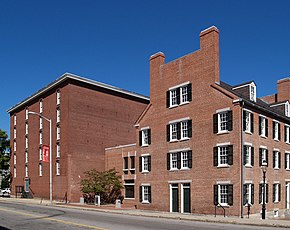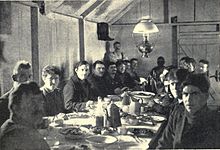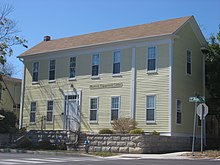
A boarding school is a school where pupils live within premises while being given formal instruction. The word "boarding" is used in the sense of "room and board", i.e. lodging and meals. As they have existed for many centuries, and now extend across many countries, their functioning, codes of conduct and ethos vary greatly. Children in boarding schools study and live during the school year with their fellow students and possibly teachers or administrators. Some boarding schools also have day students who attend the institution during the day and return home in the evenings.
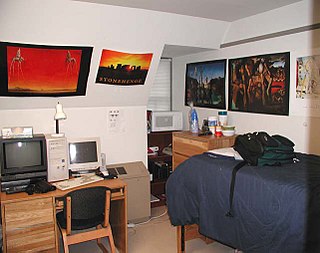
A dormitory, also known as a hall of residence or a residence hall, is a building primarily providing sleeping and residential quarters for large numbers of people such as boarding school, high school, college or university students. In some countries, it can also refer to a room containing several beds accommodating people.

A ryokan is a type of traditional Japanese inn that typically features tatami-matted rooms, communal baths, and other public areas where visitors may wear nemaki and talk with the owner. Ryokan have existed since the eighth century A.D. during the Keiun period, which is when the oldest hotel in the world, Nishiyama Onsen Keiunkan, was created in 705 A.D. Another old ryokan called Hōshi Ryokan was founded in 718 A.D. and was also known as the world's second oldest hotel. Such inns also served travelers along Japan's highways.

A pension is a type of guest house or boarding house. This term is typically used in Continental European countries, in areas of North Africa and the Middle East that formerly had large European expatriate populations, and in some parts of South America, such as Brazil and Paraguay. Pensions can also be found in South Korea, Japan, and the Philippines.

A bedsit, bedsitter, or bed-sitting room is a form of accommodation common in some parts of the United Kingdom which consists of a single room per occupant with all occupants typically sharing a bathroom. Bedsits are included in a legal category of dwellings referred to as houses in multiple occupation (HMO).

Single-room occupancy (SRO) is a form of housing that is typically aimed at residents with low or minimal incomes, or single adults who like a minimalist lifestyle, who rent small, furnished single rooms with a bed, chair, and sometimes a small desk. SRO units are rented out as permanent residence and/or primary residence to individuals, within a multi-tenant building where tenants share a kitchen, toilets or bathrooms. SRO units range from 7 to 13 square metres. In some instances, contemporary units may have a small refrigerator, microwave, or sink.

Housing at the University of California, Berkeley, includes student housing facilities run by the office of Residential and Student Service Programs (RSSP). Housing is also offered by off-campus entities such as fraternities and sororities and the Berkeley Student Cooperative (BSC).

"Common lodging-house" is a Victorian era term for a form of cheap accommodation in which the inhabitants are all lodged together in the same room or rooms, whether for eating or sleeping. The slang terms dosshouse and flophouse designate roughly the equivalent of common lodging-houses. The nearest modern equivalent is a hostel.

Room and board is a phrase describing a situation in which, in exchange for money, labour or other considerations, a person is provided with a place to live as well as meals on a comprehensive basis. It commonly occurs as a fee at higher educational institutions, such as colleges and universities; it also occurs in hotel-style accommodation for short stays.

A rooming house, also called a "multi-tenant house", is a "dwelling with multiple rooms rented out individually", in which the tenants share kitchen and often bathroom facilities. Rooming houses are often used as housing for low-income people, as rooming houses are the least expensive housing for single adults. Rooming houses are usually owned and operated by private landlords. Rooming houses are better described as a "living arrangement" rather than a specially "built form" of housing; rooming houses involve people who are not related living together, often in an existing house, and sharing a kitchen, bathroom, and a living room or dining room. Rooming houses in this way are similar to group homes and other roommate situations. While there are purpose-built rooming houses, these are rare.

An apartment hotel or aparthotel is a serviced apartment complex that uses a hotel-style booking system. It is similar to renting an apartment, but with no fixed contracts and occupants can "check out" whenever they wish, subject to the applicable minimum length of stay imposed by the company.
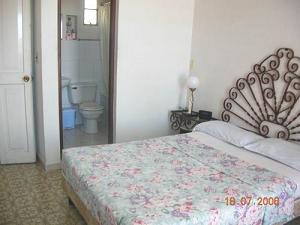
Casa particular is a phrase meaning private accommodation or private homestays in Cuba, very similar to a bed and breakfast, although it can also take the form of a vacation rental. When the meaning is clear, the term is often shortened to simply casa. Today, many casas particulares are rented through online agencies, some specifically Cuban, and others that work worldwide.
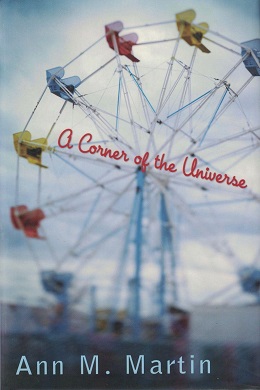
A Corner of the Universe is a 2002 young adult novel by Ann M. Martin. It won a Newbery Honor Award in 2003.

This is a list of halls of residence both on and off campus at the University of Leeds in Leeds, England.

Street v Mountford[1985] UKHL 4 is an English land law case from the House of Lords. It set out principles to determine whether someone who occupied a property had a tenancy, or only a licence. This mattered for the purpose of statutory tenant rights to a reasonable rent, and had a wider significance as a lease had "proprietary" status and would bind third parties.
The Residential Tenancies Authority (RTA) is the Queensland Government statutory body that administers the Residential Tenancies and Rooming Accommodation Act 2008. The RTA is responsible to the Minister for Housing, Local Government and Planning and Minister for Public Works.

A microapartment, also known as a microflat, is a one-room, self-contained living space, usually purpose built, designed to accommodate a sitting space, sleeping space, bathroom and kitchenette with 14–32 square metres. Unlike a traditional studio flat, residents may also have access to a communal kitchen, communal bathroom/shower, patio and roof garden. The microapartments are often designed for futons, or with pull-down beds, folding desks and tables, and extra-small or hidden appliances. They differ from bedsits, the traditional British bed-sitting room, in that they are self-contained, with their own bathroom, toilet, and kitchenette.

Co-living is a residential community living model that accommodates three or more biologically unrelated people living in the same dwelling unit. Generally co-living is a type of intentional community that provides shared housing for people with similar values or intentions. The co-living experience may simply include group discussions in common areas or weekly meals, although will oftentimes extend to shared workspace and collective endeavors such as living more sustainably. An increasing number of people across the world are turning to co-living in order to unlock the same benefits as other communal living models, including "comfort, affordability, and a greater sense of social belonging."

A hasukjib is a type of housing in South Korea that is commonly used by working adults but more popular among university students. Typically, hasukjib take the form of a small room with a single bed, desk and a mini fridge. There are several rooms on each floor of the building and usually has a restroom, shower and laundry room shared by the tenants. Meals are also often provided by the landlord or more commonly a landlady and included in the rent. The rent varies by the size of the rooms and quality of the facilities, but it's generally considered cheap and affordable. Hasukjib are often compared to gosiwon, a similar form of single-room housing in Korea.
Zolostays is a real-tech co-living focused app that provides ready-to-move rooms/beds. It was founded in 2015 by Dr. Nikhil Sikri, Akhil Sikri and Sneha Choudhry.
